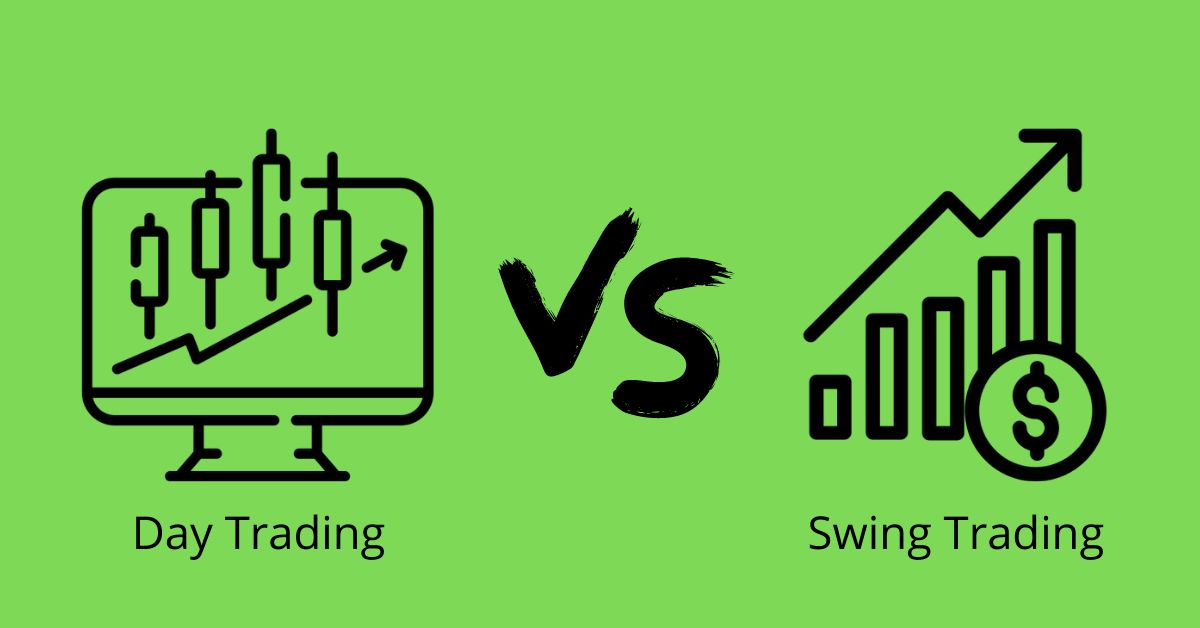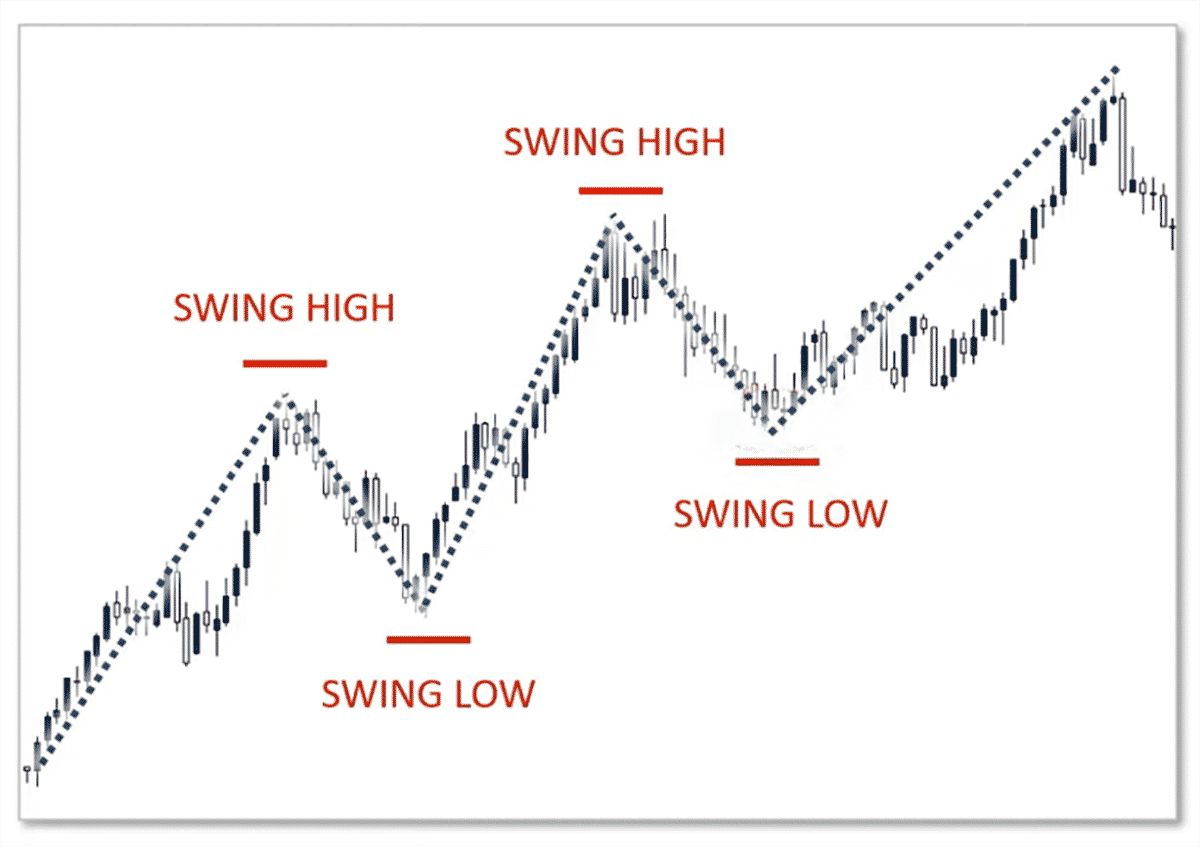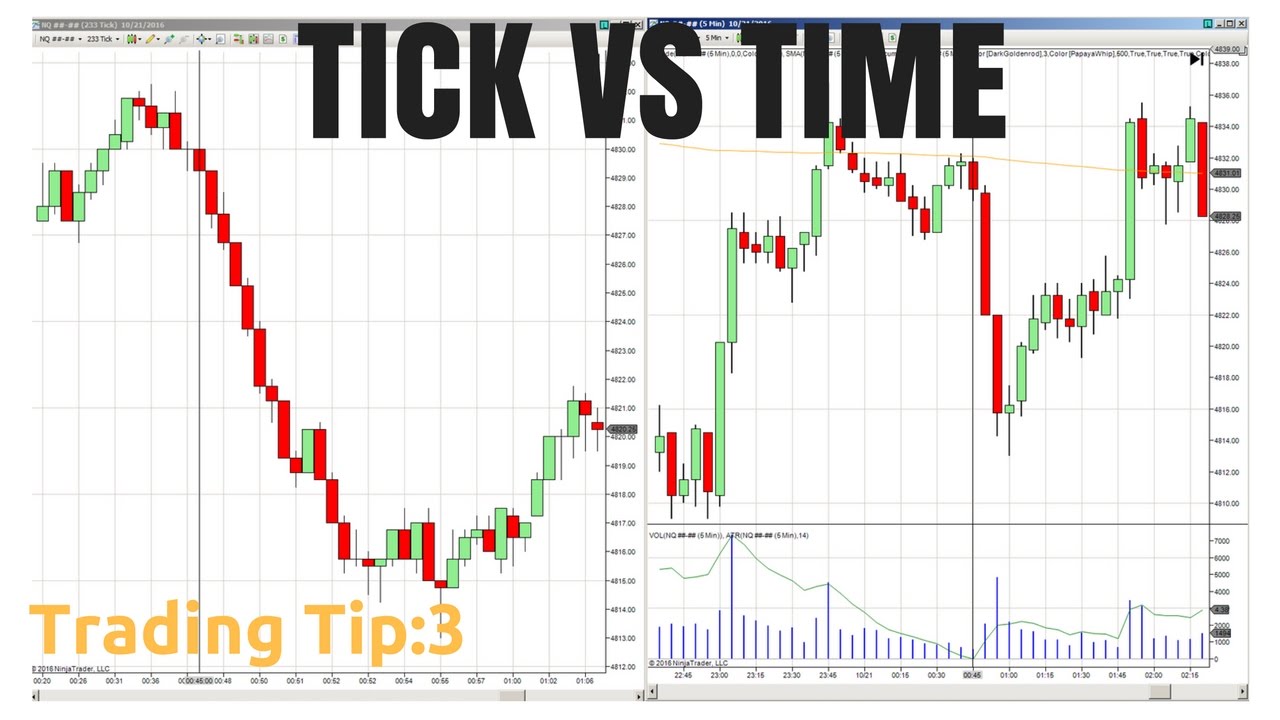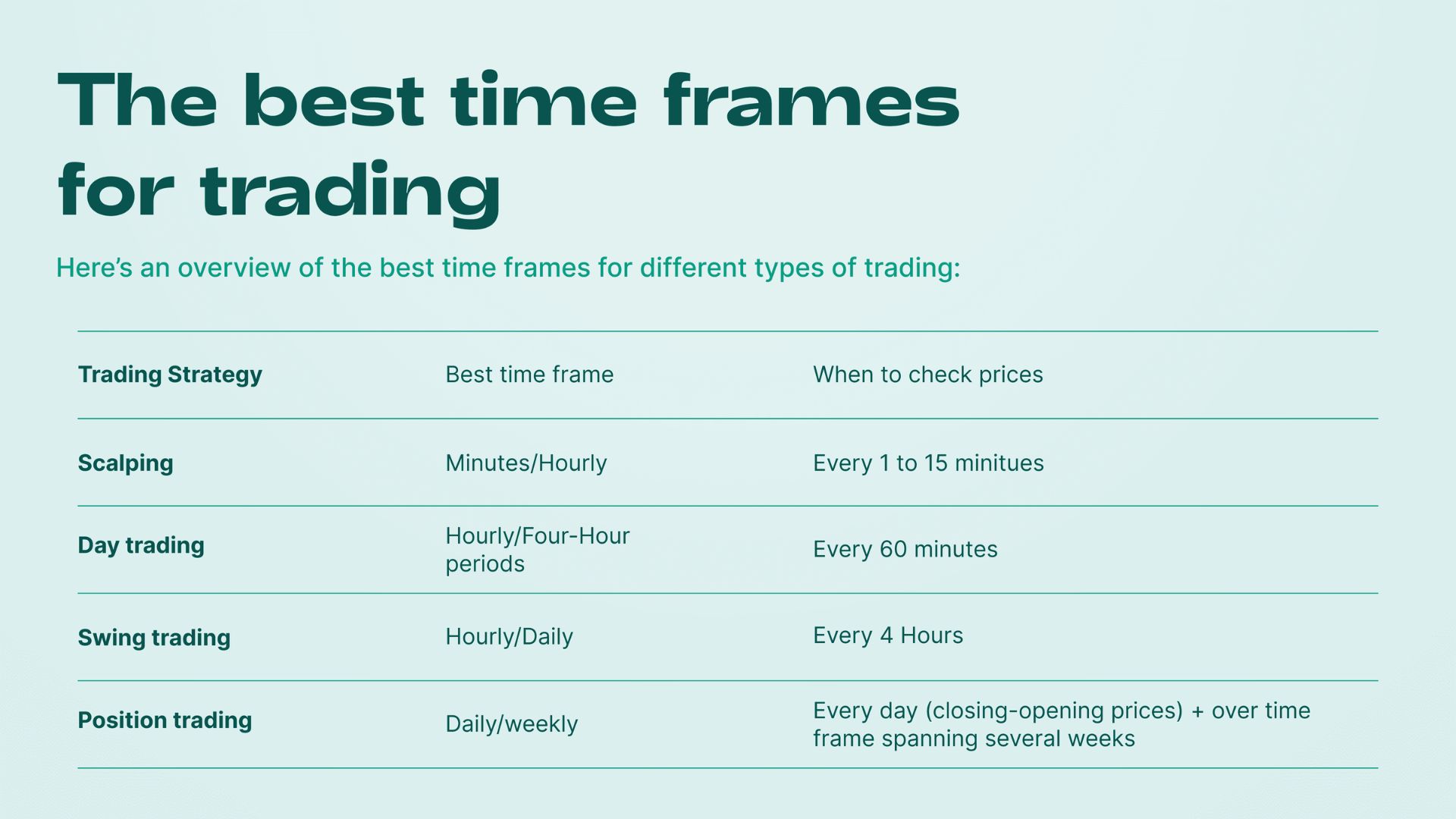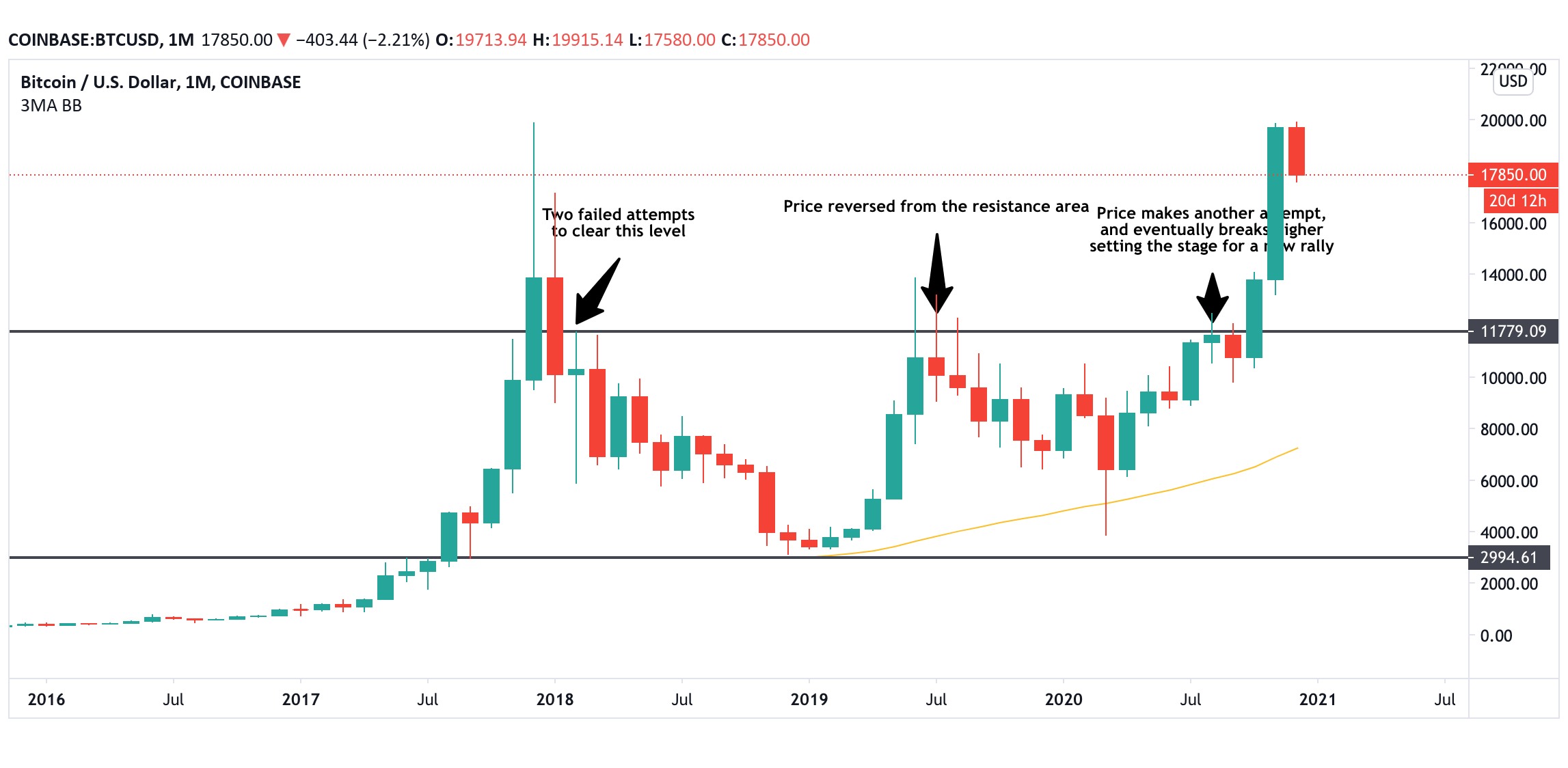Introduction
Welcome to the world of trading, where individuals seek to make profitable investments in the ever-volatile financial market. Whether you’re a seasoned trader or a novice just starting to dip your toes in the water, it’s crucial to understand the different trading strategies available to you. Two popular methods that traders often consider are swing trading and day trading.
In this article, we will explore what swing trading and day trading are, their respective benefits and risks, and provide you with some essential tips for success in each approach. By the end, you will have a clearer understanding of these trading styles, and be better equipped to decide which one suits your goals and preferences.
Swing trading and day trading are both short-term trading strategies, but they differ in terms of time commitment and approach. Swing trading typically involves holding positions for a few days to several weeks, taking advantage of short-term price fluctuations. On the other hand, day trading involves making multiple trades within a single day, aiming to profit from intra-day price movements.
Both these strategies require careful analysis, risk management, and adaptability. While swing and day trading can be profitable, they also come with their own set of challenges. Understanding the distinctions between these two methods is crucial to help you make informed decisions and increase your chances of success in the dynamic world of trading.
Understanding Swing Trading
Swing trading is a trading strategy that seeks to capture short-term price movements within a larger trend. Traders who employ this approach aim to profit from the “swings” or fluctuations in prices that occur over a few days up to several weeks.
The main goal of swing trading is to identify and enter positions at key support or resistance levels, with the expectation that the price will move in the anticipated direction. While swing trading takes advantage of shorter timeframes than long-term investing, it still requires analysis and research to identify potential trade opportunities.
Swing traders often use technical analysis tools such as chart patterns, trendlines, and indicators to identify favorable entry and exit points. By studying historical price data and market trends, swing traders aim to predict the likelihood of future price movements and make informed trading decisions.
One of the crucial advantages of swing trading is that it allows traders to capture larger profit potential compared to day trading. By holding positions for several days to weeks, swing traders have the opportunity to take advantage of substantial price movements. This can result in higher profit margins if the trade goes in their favor.
Another benefit of swing trading is that it provides traders with more flexibility in terms of time commitment. Unlike day trading, which requires constant monitoring of the market throughout the trading day, swing trading allows for a less demanding schedule. Swing traders can analyze the market in the evenings or during their free time, placing and managing trades accordingly.
Despite its advantages, swing trading also comes with its own set of risks. Holding positions for an extended period means exposure to overnight risks and potential market gaps. Additionally, swing traders need to be patient and disciplined, as they may have to withstand short-term market volatility before capturing their desired profits.
To succeed in swing trading, it’s essential to have a well-defined trading plan, risk management strategies, and emotional control. Traders must carefully monitor and adjust their positions as the market dynamics change.
In the next section, we will delve into the details of day trading, exploring its unique characteristics, advantages, risks, and tips for success.
What is Swing Trading?
Swing trading is a popular trading strategy that involves capitalizing on short-term price fluctuations within an established trend. Traders who employ this approach aim to capture “swings” in the market, profiting from the price movements that occur over a few days up to several weeks.
The key concept behind swing trading is to enter positions at strategic points when the price is expected to move in a favorable direction. Swing traders analyze technical indicators, chart patterns, and other tools to identify potential entry and exit points. By studying historical price data and market trends, traders aim to anticipate the next swing and make profitable trades.
A swing trader typically holds onto a position for a certain period, which could range from a few days to a few weeks. This timeframe allows traders to ride the ups and downs in the market, capturing the larger price movements that occur within the overall trend. By taking advantage of these short-term fluctuations, swing traders aim to maximize their profits.
One advantage of swing trading is the potential for higher profit margins compared to longer-term investment strategies. By actively monitoring the market and capturing price movements over shorter periods, swing traders can accumulate profits more quickly. Additionally, swing trading allows traders to diversify their portfolio by taking advantage of different market conditions and sectors, enhancing their overall trading strategy.
Swing trading also offers more flexibility in terms of time commitment. Unlike day trading, which requires constant monitoring during trading hours, swing traders can analyze the market and make trading decisions during their free time. This makes swing trading a popular choice for traders who have other professional commitments or prefer a more relaxed trading approach.
However, swing trading does come with its own set of risks. Traders must carefully manage their risks by setting stop-loss orders and adhering to strict risk management strategies. They also need to stay updated with relevant market news and developments that may impact their positions.
Overall, swing trading requires a combination of technical analysis skills, market knowledge, and discipline. Successful swing traders are adept at identifying trends and patterns, executing well-timed trades, and managing risk effectively. With the right approach and mindset, swing trading can be a profitable trading strategy.
Benefits of Swing Trading
Swing trading offers several benefits that attract traders and investors seeking to capitalize on short-term price movements within the larger market trends. Understanding these advantages can help you determine if swing trading aligns with your trading goals and preferences.
1. Profit Potential: One of the key benefits of swing trading is the potential for higher profit margins. By capturing the larger price movements that occur within a trend, swing traders have the opportunity to accumulate significant profits. Compared to longer-term investment strategies, swing trading allows for quicker returns on investment.
2. Flexibility in Time Commitment: Swing trading offers more flexibility as traders are not required to constantly monitor the markets throughout the day. Swing traders can analyze charts and make trading decisions during their free time. This makes swing trading suitable for individuals with other professional commitments or those who prefer a more relaxed trading approach.
3. Diversification: Swing trading allows traders to diversify their portfolio by taking advantage of different market conditions and sectors. Traders can identify opportunities across various stocks, commodities, or currencies, allowing for a more balanced approach to trading and reducing the risk associated with focusing on a single asset.
4. Emotional Control: Swing trading provides traders with more time to analyze and make trading decisions, reducing the potential for impulsive and emotionally driven trades. The longer holding periods allow traders to approach their trades with a level-headed mindset and stick to their predefined trading plan.
5. Utilizing Technical Analysis: Swing traders heavily rely on technical analysis tools and indicators to identify potential entry and exit points. This allows traders to make more informed decisions based on historical price patterns, trendlines, and other technical factors, enhancing the accuracy of their trading strategies.
6. Risk Management: Swing trading involves setting stop-loss orders to manage risk and protect capital. Traders can determine their risk tolerance and implement risk management strategies accordingly. Having a clear exit strategy helps prevent significant losses and minimizes the impact of market volatility.
It’s important to note that while swing trading offers these benefits, it also carries its own risks. Traders must have a solid understanding of technical analysis, risk management, and market dynamics to navigate the challenges associated with swing trading successfully.
Now that we have explored the benefits of swing trading, let’s delve into the potential risks involved in this trading strategy in the next section.
Risks of Swing Trading
While swing trading can be a profitable trading strategy, it also carries certain risks that traders must be aware of. Understanding these risks is crucial to effectively manage them and protect your capital. Here are some of the main risks associated with swing trading:
1. Market Volatility: Swing trading involves holding positions for several days to weeks, which exposes traders to market volatility. During these holding periods, the market can experience sudden price fluctuations and unexpected news events that can impact the value of the traded asset. Traders must be prepared for these market swings and have a strategy to mitigate the impact of volatility.
2. Overnight Risks: Holding positions overnight exposes traders to the risk of price gaps between the closing and opening of the market. Economic news, geopolitical events, or company announcements that occur outside of trading hours can significantly impact the opening price, leading to potential losses for swing traders. Implementing stop-loss orders and closely monitoring positions can help mitigate overnight risks.
3. Emotional Management: Swing trading requires patience and discipline. Traders may have to withstand short-term market fluctuations before capturing profits from their positions. Lingering in losing trades, exiting too early due to fear, or becoming overly attached to a position can lead to emotional decision-making and negatively impact trading results. Maintaining a level-headed approach and sticking to the trading plan is crucial for success.
4. Missed Opportunities: Swing traders aim to capture short-term price movements, but they may miss out on long-term market trends. By holding positions for a shorter duration, swing traders may not fully capitalize on prolonged uptrends or downtrends. Traders need to strike a balance and adapt their strategy based on the current market conditions.
5. Failed Predictions: Swing trading involves making predictions about future price movements based on technical analysis and historical patterns. However, these predictions may not always be accurate, and trades can result in losses. Traders must understand that no strategy can guarantee 100% success, and it is essential to manage risk and have a solid risk-reward ratio in place.
6. Time Commitment: Although swing trading offers more flexibility than day trading, it still requires time and effort for analysis, monitoring positions, and adjusting trades. Traders need to allocate sufficient time to stay updated on market conditions, study charts, and execute trades effectively. Failing to devote enough time to swing trading can impact decision-making and potential profitability.
By being aware of these risks, swing traders can develop strategies to manage them effectively. Utilizing technical analysis tools, setting stop-loss orders, diversifying their portfolios, and implementing risk management techniques can help mitigate the potential downsides of swing trading.
In the next section, we will provide some essential tips for successful swing trading to enhance your trading performance.
Tips for Successful Swing Trading
Swing trading can be a rewarding trading strategy when approached with the right mindset and tools. To maximize your chances of success, consider these essential tips for successful swing trading:
1. Develop a Solid Trading Plan: Create a well-defined trading plan that outlines your goals, risk tolerance, entry and exit strategies, and money management rules. Having a clear plan in place helps you stay focused and disciplined, minimizing emotional decision-making.
2. Conduct Technical Analysis: Utilize technical analysis tools and indicators to identify potential entry and exit points. Study chart patterns, trendlines, and support/resistance levels to identify favorable trading opportunities. Incorporate multiple indicators to validate your trade ideas.
3. Practice Risk Management: Implement proper risk management techniques to protect capital. Set stop-loss orders at logical levels to limit potential losses. Determine your risk-reward ratio for each trade, ensuring the potential reward justifies the risk taken.
4. Stay Informed: Stay updated on market news, economic events, and company announcements that may impact your trades. Economic data releases or unexpected news can significantly affect the market and your positions. Use reliable sources of information to make informed trading decisions.
5. Manage Your Emotions: Maintain emotional control and discipline. Avoid impulsive trades based on fear or greed. Stick to your trading plan and avoid making hasty decisions during market volatility. Accept that losses are a part of trading and learn from them.
6. Diversify Your Portfolio: Spread your risk by diversifying your swing trades across different sectors or markets. This ensures that a potential loss in one trade does not significantly impact your overall portfolio. Diversification also allows you to take advantage of various market conditions.
7. Monitor Your Trades: Monitor your positions closely while they are open. Regularly review your trades and adjust stop-loss orders or take-profit levels based on changing market conditions. Stay vigilant and be prepared to act if the trade is not moving as anticipated.
8. Maintain a Trading Journal: Keep a detailed record of your trades, including entry and exit points, reasons for the trade, and trade outcomes. Reviewing your trading journal can help identify patterns, strengths, and weaknesses in your trading strategy, enabling continuous improvement.
9. Practice Patience: Swing trading requires patience as trades may take time to unfold. Avoid prematurely closing winning trades or holding onto losing trades for too long. Stick to your trading plan and exercise patience for the trade to reach its target before exiting.
10. Continuously Learn: Keep learning and improving your trading skills. Stay updated on new strategies, market trends, and trading techniques. Regularly review and analyze your trades to identify areas for improvement. Participate in trading forums, webinars, and educational materials to expand your knowledge.
By following these tips, you can enhance your swing trading performance and increase your chances of success. Remember, successful swing trading requires practice, discipline, and continuous learning.
In the next section, we will explore the concept of day trading, its unique characteristics, and potential benefits.
Understanding Day Trading
Day trading is a trading strategy that involves buying and selling financial instruments within a single trading day. Day traders aim to take advantage of short-term price movements and capitalize on intra-day volatility. Unlike swing trading, which typically holds positions for several days to weeks, day trading seeks to profit from rapid price fluctuations within the same trading session.
Day traders actively monitor the market throughout the trading day, looking for opportunities to enter and exit trades quickly. They analyze various factors such as technical indicators, chart patterns, volume, and market news to make informed trading decisions.
One of the key characteristics of day trading is the use of leverage. Day traders often utilize margin accounts, allowing them to control larger positions with a smaller amount of capital. This amplifies both potential profits and losses, making risk management crucial for day traders.
Day trading offers several unique benefits. One advantage is the potential for high liquidity. Intraday price movements can create ample trading opportunities, enabling day traders to enter and exit positions quickly. This liquidity facilitates faster execution and minimizes the risk of slippage.
Another benefit is the ability to profit from both rising and falling markets. Unlike swing trading, which primarily focuses on capturing uptrends, day traders can profit from short-selling opportunities, allowing them to take advantage of bearish market conditions as well.
Day trading also provides instant feedback on trading decisions. Since trades are opened and closed within the same day, day traders quickly realize their profits or losses. This allows for prompt evaluation of trading strategies and adjustment of approaches if necessary.
However, day trading is not without its risks. The fast-paced nature of day trading requires traders to make split-second decisions and can lead to increased stress and emotional pressures. Traders must be able to handle the intensity and maintain discipline throughout the trading day.
Furthermore, day traders can face challenges related to commissions and fees, which can add up quickly due to the higher number of trades executed. It is crucial for day traders to factor in these costs when assessing potential profitability.
Overall, day trading requires a combination of technical analysis skills, risk management abilities, and the ability to act quickly. Traders should have a well-defined trading plan, solid understanding of market dynamics, and the discipline to execute their strategies consistently.
In the next section, we will explore the benefits of day trading and discuss the potential risks associated with this trading strategy.
What is Day Trading?
Day trading is a popular trading strategy that involves buying and selling financial instruments within the same trading day. Unlike swing trading or long-term investing, day traders do not hold positions overnight and aim to profit from short-term price fluctuations.
The primary objective of day trading is to capitalize on intra-day price movements. Day traders closely monitor the market and execute multiple trades, aiming to take advantage of small price differentials throughout the trading day. By entering and exiting positions quickly, day traders seek to accumulate profits from these rapid price fluctuations.
Day traders employ various strategies and techniques to identify potential trade opportunities. They analyze technical indicators, chart patterns, volume, and market news to make informed trading decisions. This involves studying price charts, monitoring order flow, and taking advantage of short-term market inefficiencies.
One of the distinguishing features of day trading is the use of leverage. Day traders often make use of margin accounts, allowing them to control larger positions with a smaller amount of capital. This amplifies both potential profits and losses. It is important for day traders to have strict risk management strategies in place to protect capital and limit losses.
Day trading offers several advantages to traders. The potential for high liquidity is one key benefit. Intraday price movements can create numerous trading opportunities, enabling day traders to enter and exit positions quickly. The ability to act swiftly and take advantage of short-term price fluctuations can lead to potential profits.
Another benefit of day trading is the ability to profit from both rising and falling markets. Day traders can take advantage of short-selling opportunities, allowing them to benefit from bearish market conditions as well. This flexibility enables day traders to adapt to changing market trends and make profits in various market environments.
However, day trading also comes with its own set of risks. The fast-paced nature of day trading requires traders to make quick decisions. The pressure of making split-second decisions and the potential for increased stress can challenge even the most experienced traders. Emotional control and discipline are essential in navigating these challenges.
Additionally, day traders need to be mindful of trading costs such as commissions and fees. Due to the high number of trades executed in a day, these costs can add up and impact profitability. Traders must carefully consider these expenses when calculating potential gains and losses.
To succeed in day trading, traders should have a solid understanding of technical analysis, risk management techniques, and market dynamics. A well-defined trading plan, disciplined execution, and continuous learning are vital for day traders to navigate the markets effectively.
In the next section, we will explore the potential benefits of day trading and discuss the risks associated with this trading strategy.
Benefits of Day Trading
Day trading, as a trading strategy, offers several potential benefits that attract traders seeking short-term profit opportunities in the financial markets. Understanding these advantages can help you determine if day trading aligns with your trading goals and preferences.
1. Profit Potential: Day trading offers the potential for quick profits. By taking advantage of short-term price fluctuations and executing multiple trades within a single trading day, day traders have the opportunity to accumulate profits more rapidly compared to longer-term trading strategies.
2. Liquidity: Day traders often focus on highly liquid markets and stocks. This ensures that traders can easily enter and exit a trade, as there are ample buyers and sellers throughout the trading day. High liquidity reduces the risk of price slippage and allows for faster execution of trades.
3. Flexibility: Day trading offers flexibility in terms of time commitment. Traders do not need to hold positions overnight and can take advantage of other opportunities or pursue other interests outside of trading hours. It is particularly suitable for individuals who prefer an active and engaged trading style without the need for long-term commitment.
4. Quick Feedback and Learning Opportunities: In day trading, trades are opened and closed within a single trading session, providing immediate feedback on trade outcomes. This enables traders to quickly evaluate and learn from their trades, improving their skills and strategies for future trades.
5. Ability to Profit in Any Market Direction: Day traders can profit from both rising and falling markets. Unlike long-term investors who may experience losses during market downtrends, day traders can take advantage of short-selling opportunities and profit from bearish market conditions as well.
6. Improved Discipline and Emotional Control: Day trading requires traders to remain focused, disciplined, and in control of their emotions throughout the trading day. The fast-paced nature of day trading necessitates quick decision-making and the ability to manage stress effectively, leading to improved emotional control and discipline.
7. Skill-building Opportunities: Day trading provides an environment for traders to continually sharpen their skills. By actively participating in the market and executing multiple trades, day traders gain valuable experience in analyzing charts, identifying patterns, managing risk, and executing trades timely and efficiently.
While day trading offers potential benefits, it is important to note that it also carries significant risks. The potential for quick losses, high trading costs, emotional stress, and the need for constant market monitoring are among the challenges associated with day trading. Traders must thoroughly understand these risks and have a well-designed trading plan and risk management strategies in place.
In the next section, we will discuss the potential risks involved in day trading and provide tips for success in this trading strategy.
Risks of Day Trading
Day trading, as an active and fast-paced trading strategy, comes with a unique set of risks that traders need to be aware of. Understanding these risks is crucial for successful day trading and to protect yourself from incurring substantial losses. Here are some of the main risks associated with day trading:
1. Volatility and Market Fluctuations: Day trading involves taking advantage of short-term price movements, which can be highly volatile. Rapid price fluctuations can result in unexpected losses if trades move against the trader. Traders must be prepared for sudden market swings and have appropriate risk management strategies in place.
2. Emotional Pressure and Stress: The fast-paced nature of day trading can create emotional pressure and stress. Traders must be able to make quick decisions while managing their emotions effectively. It is crucial to maintain discipline and stick to a well-defined trading plan to avoid impulsive actions based on fear or greed.
3. High Trading Costs: Day traders execute multiple trades within a single trading session, which can lead to significant trading costs. Commissions, fees, and spreads can eat into profits. It is important for day traders to carefully consider these costs and factor them into their trading strategies and profitability calculations.
4. Lack of Diversification: Day traders typically focus on a limited number of stocks or markets, which can result in a lack of diversification. Relying heavily on a single stock or market exposes traders to increased risk. Any adverse news or sudden price movement can have a significant impact on the portfolio. Proper risk management techniques and diversifying trading opportunities help mitigate this risk.
5. Time Commitment and Market Monitoring: Day trading requires traders to actively monitor the market throughout the trading day. This demands significant time commitment and continuous focus. Traders need to be consistently available during market hours, which can be challenging for individuals with other professional or personal commitments.
6. Information Overload: The abundance of market data, news, and indicators can lead to information overload for day traders. Filtering relevant information and making informed decisions amidst the noise can be a challenge. Traders need to develop effective strategies to handle and analyze information efficiently.
7. Limited Learning Opportunities: Day trading primarily focuses on short-term price movements, limiting the learning opportunities compared to longer-term trading strategies. The quick feedback can be a double-edged sword, as traders may be tempted to rely on past success without making necessary adjustments or learning from losses. Continuous learning and adaptability are crucial for long-term success.
To mitigate these risks, day traders need to develop effective risk management strategies, such as setting stop-loss orders, diversifying their trading opportunities, and maintaining a disciplined approach to trading. Implementing proper money management techniques and continuously updating trading knowledge are also essential in managing the risks associated with day trading.
Now that we have explored the risks, in the next section, we will provide some valuable tips for successful day trading to help enhance your trading performance.
Tips for Successful Day Trading
Day trading can be a challenging but potentially rewarding trading strategy. To increase your chances of success, consider the following tips for successful day trading:
1. Develop a Solid Trading Plan: Create a well-defined trading plan that includes entry and exit strategies, risk management rules, and profit targets. Having a clear plan in place helps you stay focused and disciplined amidst the fast-paced nature of day trading.
2. Master Technical Analysis: Become proficient in technical analysis to identify potential trade opportunities. Study chart patterns, trendlines, and key indicators to spot entry and exit points. Combine multiple indicators to validate trade signals, increasing the likelihood of success.
3. Practice Risk Management: Implement effective risk management strategies to protect your capital. Set appropriate stop-loss orders to limit potential losses and adhere to risk-reward ratios to ensure the potential reward justifies the risk taken on each trade.
4. Stay Informed: Keep up to date with relevant market news, economic data, and company updates that may impact your trades. Stay connected to reliable sources of information to make informed trading decisions.
5. Use a Demo Account: Before risking real capital, practice trading strategies and new techniques using a demo account. This allows you to gain experience and test your strategies in a risk-free environment.
6. Start Small: Begin with small position sizes and gradually increase as you gain confidence and experience. Starting small helps manage potential losses and allows for learning and refining your strategies without significant financial risks.
7. Be Disciplined: Stick to your trading plan and avoid making impulsive decisions based on fear or greed. Emotional control and discipline are crucial in day trading. Avoid deviating from your plan and let your strategies and analysis guide your decisions.
8. Monitor Market Volatility: Be aware of market volatility and adjust your trading strategies accordingly. Volatile market conditions can present both opportunity and risk. Adapt your approach to suit the current market environment.
9. Practice Patience: Day trading may involve quick decision-making, but patience is still vital. Wait for the right setups that fit your trading plan and have a high probability of success. Avoid the temptation to overtrade or chase trades that don’t align with your strategy.
10. Continuously Learn and Adapt: Stay curious and committed to continuous learning. Engage in ongoing education, study successful traders, and keep up with market trends. Adapt your trading strategies based on market conditions and your own experiences to constantly improve your trading performance.
Keep in mind that day trading requires practice, discipline, and continuous learning. It is essential to develop a personalized approach that matches your trading style and risk tolerance. Test different strategies, adapt as needed, and focus on consistently improving your trading skills over time.
In the next section, we will provide an overview of swing trading versus day trading and help you determine which approach may be suitable for you.
Which One is Right for You?
Choosing between swing trading and day trading ultimately depends on your personality, trading goals, and lifestyle. Both approaches have their own benefits and considerations, so it’s important to evaluate which one aligns best with your preferences and circumstances.
Swing Trading:
Swing trading is suitable for traders who have a more relaxed schedule or prefer a less demanding trading approach. If you have limited time during the day or other professional commitments, swing trading provides the flexibility to analyze the market and execute trades during your free time. Swing trading allows you to take advantage of short-term price movements over a few days to several weeks, potentially capturing larger profit potential within the overall trend. It requires patience, discipline, and the ability to ride out short-term market fluctuations.
Day Trading:
Day trading is for individuals who thrive in fast-paced environments and have the time and dedication to actively monitor the markets throughout the trading day. If you can commit to consistent market monitoring and quick decision-making, day trading can provide opportunities for frequent trades and potential quick profits. Day trading requires strong analytical skills, risk management proficiency, and the ability to handle the high pressure and emotional demands that come with making rapid trading decisions.
Consider the following factors to determine which approach may be right for you:
Time Commitment: Evaluate how much time you can dedicate to trading. If you have a full-time job or other obligations that limit your availability during the day, swing trading may be a better fit. On the other hand, if you can commit to actively monitoring the markets throughout the day, day trading may be suitable.
Risk Tolerance: Assess your risk tolerance and comfort level with market volatility. Swing trading allows for holding positions overnight, exposing you to overnight risks and potential market gaps. Day trading involves quick trades within a single day, potentially subjecting you to intraday price fluctuations and increased emotional pressure.
Personality Traits: Consider your personality traits and preferences. Swing trading requires patience, discipline, and a more relaxed approach. If you prefer analyzing charts, studying trends, and making fewer but potentially more significant trades, swing trading may be a good fit. If you thrive in fast-paced environments, enjoy making quick decisions, and can handle the emotional demands of day trading, it may be a suitable choice for you.
Trading Goals: Define your trading goals. Are you aiming for consistent, long-term growth or are you looking for quick profits? Swing trading may be more aligned with long-term growth goals, while day trading may offer opportunities for quicker gains with more frequent trading activity.
Remember, it is essential to thoroughly research and understand the intricacies of both swing trading and day trading. Consider practicing with a demo account and start with smaller position sizes to gain experience and assess which approach suits you best.
Ultimately, the right trading approach depends on your personal circumstances, preferences, and goals. Some traders may find success in a combination of both swing trading and day trading, adapting their strategies to suit different market conditions. Experiment, learn, and refine your approach as you gain experience and develop your trading skills.
To conclude, carefully consider your time commitment, risk tolerance, personality traits, and trading goals to determine whether swing trading or day trading is the right fit for you.
Conclusion
Choosing between swing trading and day trading is a decision that requires careful consideration of your goals, personality, and available time. Each approach has its own benefits and risks, and finding the right fit for your trading style is crucial for long-term success in the financial markets.
Swing trading offers the opportunity to capture larger profit potential by holding positions for a few days to several weeks. It provides flexibility for traders with limited time availability or those who prefer a more relaxed trading approach. Swing trading requires patience, discipline, and the ability to navigate short-term market fluctuations.
On the other hand, day trading entails actively monitoring the markets throughout the trading day and executing multiple trades to profit from short-term price movements. Day trading suits individuals who thrive in a fast-paced environment, have the time and dedication to commit to market monitoring, and can make quick, informed decisions under pressure.
Both swing trading and day trading require strong analytical skills, risk management proficiency, and emotional control. Implementing proper trading plans, utilizing technical analysis tools, and practicing effective risk management strategies are vital for success in either approach.
It’s important to note that neither swing trading nor day trading guarantees profitability. Both strategies involve risks, including market volatility, emotional pressure, and trading costs. Traders must thoroughly understand these risks and adjust their strategies accordingly.
Ultimately, the choice between swing trading and day trading depends on your time availability, risk tolerance, personality traits, and trading goals. Taking into account these factors, you can determine which approach suits your individual circumstances and preferences.
Remember to continually learn, adapt, and refine your trading skills, regardless of the approach you choose. Stay informed about market trends, develop trading plans, and practice discipline in executing your strategies.
Whether you choose swing trading or day trading, the journey as a trader can be both challenging and rewarding. With dedication, perseverance, and the right mindset, you can navigate the markets and work towards achieving your trading goals.







